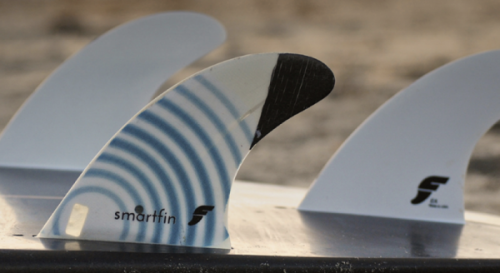
By Trisha Kholiya, Student Writer
After buying her own board off Craigslist, Jasmine Simmons, a fourth-year UC San Diego computer science and engineering undergraduate, taught herself to surf. Now, she is using that pastime to not only ride the waves, but also help gather important data on the ocean.
While catching waves, Simmons and other CSE students often find themselves working on the Smartfin project, a collaboration between the Scripps Institution of Oceanography (SIO) and the Surfrider Foundation that seeks to analyze data about near-coastal ocean regions, where people surf, play and interact with the ocean environment.
The program is an offshoot of the university’s Coastal Data Information Program (CDIP), which collects information on wave heights, periods, directions, sea surface temperatures and other ocean parameters. However, these comprehensive oceanographic measurements are difficult to get in near-coastal regions.
“We’re trying to collect data in a new region [where more people are affected], but that also means that we have to collect a lot more data,” Jasmine said.
Near-coastal regions are of particular interest because they are harder for satellites to measure – sea surface temperatures and wave patterns in these areas are largely unknown. This information is important for lifeguards, for example, to monitor human safety. With more real-time information about wave movement, they can make informed decisions about how waves affect the people they are trying to protect.
After her third year, Jasmine participated in a Research Experience for Undergraduates, during which she learned about Smartfin and began working under senior research engineer Phil Bresnahan. He has been instrumental in creating Smartfin’s hardware: a surfboard fin with embedded sensors. Since 2016, these fins have been distributed to surfers worldwide through Surfrider Foundation. The data is uploaded after each surfing session.
Jasmine and other computer scientists are examining the ocean data from Smartfin users to develop a data processing framework that analyzes the same ocean parameters as CDIP. But the platform can be a challenge. This new way of collecting raw data can be affected and potentially biased by surfer movement. Jasmine’s team is calculating significant wave heights, peak periods and peak directions. They also hope to plot surfers’ paths to determine where they started and ended and where their best waves were.
“Although we need the scientific aspect of it, it’s more about visualizing the data so it’s more useful for the public and not just about academic use,” Jasmine said. “I think that it does a really good job at bridging the gap between academia and the public. It’s taking scientists that are traditionally thought of as these people who stay inside and code all day or do experiments in a lab all day and it’s connecting them with surfers who are outside playing in the ocean.”
From her work on this project, Jasmine has become interested in data mining and machine learning. This interest has melded with her two minors in mathematics and ethnic studies. Since learning about biases in the artificial intelligence systems used by high-level corporations, Jasmine has wanted to combine her passion for social justice and data visualization to create non-biased artificial intelligence systems with cleaner data sets.
The Smartfin project is also an opportunity for Jasmine to pursue her own interests outside of school by surfing and honing in on what she enjoys in academia. The best parts are when she goes out to surf and tracks her own surf sessions with her coding skills back home.
“It’s forcing me to adopt this hybrid role, where some days I’m inside coding and some days I’m forced to go outside and go surfing,” Jasmine said. “It’s what I would want to do anyway, but it gives me an excuse to go surf.”

For more information check out our Smartfin video on the UCTV Computer Science Channel.

